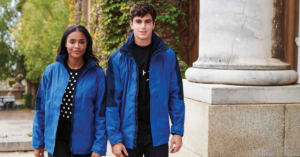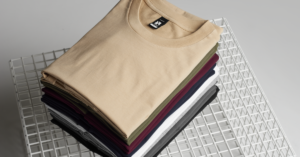Preparing for a marathon is a big journey. When you’re not training and exercising in the run-up to the big day, you’re planning the water breaks, pace break-down and running outfit.
So let’s talk a bit more about your running outfit. Assuming you’re not running the marathon in fancy dress (kudos to you, if you are) you’ll have been looking out for the perfect running shirt for a marathon.
It’s not the same as buying a pair of jeans, there is a lot more to this purchase than you might think. After all, when was the last time you ran a marathon in a pair of jeans? There is so much more to consider when buying clothes to run a marathon, and we’ll discuss these key thing in this blog post.
Priority 1: Comfort
A big part of running a marathon is being comfortable. After all, it’s a long, exhausting, tiring day. You’ll be on your feet all day, exerting yourself, without the ability to stop and rest (at least for any meaningful amount of time). Remember, comfort needs to be key. You need to choose your marathon clothing because it’s comfortable, and you’ll be confident and un-distracted wearing it. The last thing you want when hitting halfway, is to be thinking about the chaffing under your arms, or the itchy seam running down your back. Because of this – it’s key to test you items out. Buy a few options and give them a test drive before the big day. Use your ‘test’ wear to look out for any potential issues:
- Any chaffing or rubbing of the fabric against your skin
- Any tight areas that might be cutting your blood flow
- Any itchiness from seams or labels
- Any riding up or movement that would be annoying or distracting
Once you’ve tested out your items, you’ll be able to identify any of these problems and hopefully find a better alternative, or fix the issue. Never, ever, go into a marathon wearing a completely unworn outfit, that hasn’t been given a test run. It would be a recipe for disaster!
Priority 2: Breathability
The next thing you want to consider, is your fabric choice. As you probably know, not all fabrics are created equal! Just because a fabric works great for you during a 5km run, doesn’t mean you’ll enjoy wearing it during a marathon.
Whether you go for synthetic or organic, the material or fabric you choose will have a great impact on how your body feels during the race. If you’re running a marathon in spring or summer, you’ll want to look closely at breathability, and even look for mesh inserts – so add additional ari flow. This will help to keep you cool and feeling fresh – which will stop you overheating.
It’s also worth looking into the thickness or the fabric too. Can you move comfortably in the garment, or do you feel restricted? Often times, people opt for thicker garments made with all-natural fabric (thinking it will keep them cooler) but then don’t account for how stiff or restrictive thicker items can be.
Priority 3: Climate control
By climate control, we mean, what will the weather be like? There aren’t many winter marathon, but they do take place occasionally – and if you’re running one, you’ll want to consider keeping yourself warm. Long sleeved breathable tops work great in these cases.
Priority 4: It looks good!
Of course, you’ll want to look good when running your marathon. What with all the photos and all the spectators, you’ll want to ensure you look the part. Whilst this shouldn’t be your number one priority, we know that looking good often helps you perform better.
Choosing bright colours helps you stand out to your friends and family watching from the side-lines, and bright patterns and prints can help you get noticed by cameras too. If you’re running for a specific cause, or charity, you can also get specialist running clothes and active gear personalised using Garment Printing. That way you can be raising awareness for your chosen charity with every step you take!
Key terms to look out for:
Lastly, as a bit of extra advice, when shopping for your marathon running shirt, keep these key phrases in mind:
Thermal Insulation: Garments with this technology have different layers to break up the way the body regulates its temperature whilst running.
Wicking: Fabrics with wicking can absorb moisture and ‘expel’ it as vapour.
Water Vapour Transmission: This is how much water a material can transmit. The lower the number the better.
Anti-static Performance: Material with this help you avoid static electricity and/or reduces its effects.
Antimicrobial Performances: This type of fabric is designed to kill microorganisms. Good for keeping bad odours at bay.




